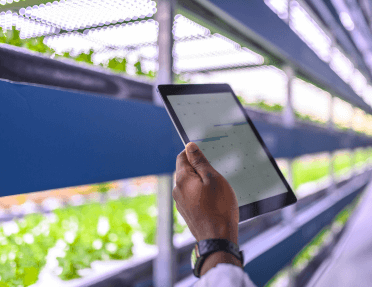
The Future of Agriculture: Innovation and Labor
Explore the transformative impact of technological innovation on agricultural labor in this comprehensive guide. From AI-driven farming to precision agriculture, discover how emerging technologies are reshaping workforce needs and creating new opportunities.Learn about the skills required for future farm workers and strategies for adapting to the evolving agricultural landscape in the digital age.
“The future of agriculture lies at the intersection of technological innovation and human expertise, cultivating a new era of sustainable farming.”
The Technological Revolution in Agriculture
Agriculture is on the cusp of a technological revolution that promises to fundamentally transform the way we produce food. This revolution, often referred to as Agriculture 4.0, is characterized by the integration of digital technologies, automation, and data-driven decision-making into farming practices.
At the forefront of this revolution is precision agriculture. This approach uses technologies such as GPS guidance, control systems, sensors, robotics, drones, and autonomous vehicles to optimize crop management. For instance, precision planting systems can adjust seed depth and spacing based on soil conditions, while variable rate technology allows for the precise application of fertilizers and pesticides, reducing waste and environmental impact.
Artificial Intelligence (AI) and Machine Learning (ML) are playing increasingly important roles in agriculture. These technologies can analyze vast amounts of data from various sources – including satellite imagery, weather forecasts, and soil sensors – to predict crop yields, detect plant diseases early, and optimize irrigation. AI-powered systems can make real-time decisions about crop management, potentially increasing yields while reducing resource use.
The Internet of Things (IoT) is another key component of the agricultural technology revolution. IoT devices can monitor various aspects of farm operations, from soil moisture levels to livestock health, providing farmers with real-time data to inform their decisions. This constant stream of information allows for more precise and timely interventions, improving overall farm efficiency.
Biotechnology and genetic engineering are also advancing rapidly, offering the potential for crops that are more resistant to pests, diseases, and environmental stresses. CRISPR gene editing technology, for example, could allow for the development of crops with improved nutritional profiles or enhanced resilience to climate change.
Vertical farming and controlled environment agriculture are expanding the possibilities of where and how food can be grown. These approaches, which often incorporate hydroponics or aeroponics, can produce crops year-round in urban environments, potentially reducing transportation costs and improving food security in cities.
As these technologies continue to evolve and become more integrated into farming practices, they are not only changing how we grow food but also reshaping the nature of agricultural labor. The farm worker of the future will need to be as comfortable with data analysis and robotic systems as they are with traditional farming tools.
The Evolving Role of Labor in High-Tech Agriculture
As technology transforms agriculture, the role of human labor is evolving significantly. While some fear that automation and AI might reduce the need for farm workers, the reality is more nuanced. Technology is changing the nature of agricultural work, creating new roles and requiring new skills.
One of the most significant changes is the increasing need for tech-savvy farm workers. As farms adopt more advanced technologies, there's a growing demand for workers who can operate, maintain, and troubleshoot complex equipment. This includes skills in operating drones for crop monitoring, managing automated irrigation systems, and interpreting data from various sensors and IoT devices.
Data analysis is becoming a crucial skill in modern agriculture. Farm workers need to be able to interpret the vast amounts of data generated by precision agriculture technologies to make informed decisions about crop management. This requires a basic understanding of data science and the ability to use farm management software effectively.
The rise of controlled environment agriculture, including vertical farming and greenhouse production, is creating new specialized roles. These systems require workers with knowledge of hydroponics, climate control systems, and the specific needs of plants grown in these environments. These roles often blend traditional agricultural knowledge with technical skills more commonly associated with engineering or computer science.
Maintenance and repair of high-tech farm equipment is another area where new skills are required. As farm machinery becomes more complex and computerized, there's a growing need for workers who can diagnose and fix issues with both the mechanical and electronic components of these machines.
However, it's important to note that traditional agricultural skills remain valuable. The most effective farm workers of the future will likely be those who can combine traditional farming knowledge with new technological skills. Understanding plant biology, soil health, and animal husbandry remains crucial, even as the methods for applying this knowledge evolve.
The integration of technology is also creating opportunities for remote work in agriculture. Tasks such as data analysis, system monitoring, and even some aspects of farm management can now be performed off-site, opening up agricultural career opportunities for those who may not be able or willing to engage in physical farm labor.
As farms become more technologically advanced, there's also an increasing need for workers with skills in cybersecurity and data privacy. Protecting farm data and securing connected systems from potential cyber threats is becoming a critical aspect of modern farm management.
This evolution in agricultural labor is not just changing the types of jobs available but also the nature of farm work itself. Many tasks are becoming less physically demanding but more cognitively complex, potentially making agricultural careers more attractive to a broader range of individuals.
Preparing the Agricultural Workforce for a High-Tech Future
As agriculture becomes increasingly technology-driven, preparing the workforce for this high-tech future is crucial. This preparation involves a multifaceted approach encompassing education, training, and cultural shifts within the agricultural sector.
Educational institutions play a vital role in shaping the future agricultural workforce. Agricultural programs at universities and vocational schools need to adapt their curricula to include courses on emerging technologies, data analysis, and digital farm management. This might involve creating new interdisciplinary programs that combine traditional agricultural science with computer science, robotics, or data analytics.
Continuous learning and upskilling programs are essential for current farm workers to adapt to technological changes. Farms and agricultural organizations should invest in ongoing training programs that keep workers updated on the latest technologies and practices. This could include workshops on operating new equipment, courses on data interpretation, or certifications in specific technological applications.
Apprenticeship and internship programs that expose young people to high-tech farming practices can help attract a new generation to agricultural careers. These programs should emphasize the technological aspects of modern farming to appeal to tech-savvy youth who might not have previously considered a career in agriculture.
Collaboration between the agricultural sector and technology companies is crucial. Partnerships that bring together farming expertise and technological innovation can help ensure that new technologies are developed with the needs of farmers and farm workers in mind. These collaborations can also provide opportunities for knowledge exchange and skill development.
Soft skills should not be overlooked in preparing the workforce for the future. As farming becomes more data-driven and automated, skills such as critical thinking, problem-solving, and adaptability become increasingly important. Training programs should incorporate these skills alongside technical knowledge.
Addressing the digital divide in rural areas is essential for preparing the agricultural workforce for a high-tech future. Investments in rural broadband infrastructure and ensuring access to digital devices are necessary to enable farm workers to fully engage with new agricultural technologies.
Cultural change within the agricultural sector is also important. Encouraging a culture of innovation and continuous learning can help overcome resistance to new technologies and practices. This might involve highlighting success stories of farms that have successfully integrated new technologies or creating mentorship programs where tech-savvy workers can guide others in adopting new practices.
Finally, it's crucial to ensure that the transition to high-tech agriculture is inclusive. Efforts should be made to provide opportunities for all segments of the agricultural workforce, including seasonal workers, older farmers, and those from disadvantaged backgrounds, to gain the skills needed for the future of farming.
By taking a comprehensive approach to workforce development, the agricultural sector can ensure that it has the skilled labor force needed to leverage new technologies and drive innovation in farming practices.

MYHRLINK's AgTech Workforce Solutions
MYHRLINK offers innovative workforce solutions for the future of agriculture. We help farms navigate the transition to high-tech farming with tailored recruitment, training, and management services.
- Tech-Savvy Recruitment
- Digital Skills Training
- Workforce Analytics
The future of agriculture lies at the intersection of technological innovation and human expertise. As we've explored, emerging technologies are reshaping every aspect of farming, from crop management to livestock care, creating new opportunities and challenges for the agricultural workforce.
The key to successfully navigating this transition is adaptability. Farms, educational institutions, and workers themselves must be prepared to evolve continuously as new technologies emerge and farming practices change. This requires a commitment to lifelong learning, a willingness to embrace innovation, and the flexibility to adapt to new roles and responsibilities.
While technology will undoubtedly automate many aspects of farm work, the human element remains crucial. The farm worker of the future will be a skilled technician, data analyst, and traditional farmer rolled into one, combining age-old agricultural wisdom with cutting-edge technological know-how.
As we look ahead, it's clear that the agricultural sector must invest heavily in workforce development to meet the demands of high-tech farming. This includes not only training in specific technologies but also fostering the critical thinking and problem-solving skills necessary to adapt to an ever-changing landscape.
Moreover, as agriculture becomes more technologically advanced, it has the potential to attract a new generation of workers who might not have previously considered a career in farming. By highlighting the high-tech aspects of modern agriculture, the sector can address labor shortages and bring fresh perspectives to age-old challenges.
The future of agriculture is one of exciting possibilities, where technology and human ingenuity combine to create more sustainable, efficient, and productive farming systems. By embracing this future and preparing the workforce to thrive in it, we can ensure that agriculture continues to play its vital role in feeding the world and stewarding our natural resources for generations to come.

